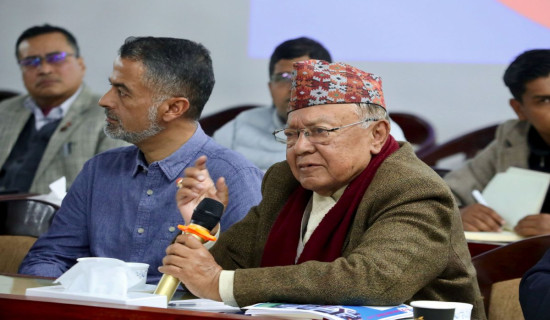- Tuesday, 23 December 2025
Bulls In Nepal: Triggering Aspects
NEPSE, whose history is not long, had to move around the index of starting point 100 since its establishment and operation in the year 1994. It was finally after 1999, the market started its bullish trend till it reached the peak of the index, making it 545.82 on November 23, 2000 - the 'First Bull Record' in Nepal's market. With 445.82 per cent of absolute return, NEPSE gained popularity in limited regions, basically within the capital. With positive hopes in the economy, investors looked for places to invest, leading to this first bull - where every ray of hope was positive. Despite ongoing civil war, there were positive hopes and it was believed that industries and manufacturing would shape the market sooner or later, taking the entire market to a new height.
But, the irony part is - after every bull, there is a bear that comes around. Hence, the market had to drop down gradually due to the influences of civil war and diminishing interest in its production. Increased migration level then equally contributed. The market started gaining height in 2006 and then reached the highest point in August 2008 with an index of 1175.38. Nepal was going through historical political change during this time. There was the end of 10-year-long civil war and the monarchy was removed, which created positive hopes in the political arena. It also brought out massive expectations of political stability, which was highly pessimistic earlier - raising the confidence level of investors.
Confidence level
The reason for this bull was all about the hope that political dimensions would hold because of which migration was also seen. As people started moving towards capital and urban cities, there was an increased demand for loans during this time, so market obtained 531.18 per cent of absolute return.
Thereafter it was in 2016, eight years later, NEPSE got to sense the next big bull where the index was as high as 1881.45 when the market gained 543.63 per cent of the total gain. The reason for this bull was confidence level raised: Nepal did overcome earthquake impact amid economic blockade imposed by India. There had been massive charm in real estate during this era, because of which the proportion of loans disbursed by banks also raised, leading to the downfall of interest rates which ultimately affected diminishing charm in fixed deposits. There were new investors during this bull which equally boosted the index level.
Finally, the fourth bull that Nepal got to see was in the year 2021. With global optimistic views regarding COVID-19 vaccines, and the lockdown being wrapped up, the investors got to realise that the share market is that space that would exist even during massive emergencies. Besides, Nepal’s share market was gaining technological advantages during this era when the online access was on the rise. Be it online DEMAT account access, online IPO application practices, or easy TMS account opening - there was a large number of active participants. As a result, the share market was no longer limited to big cities but went into access of every individual from Hangpang of Taplejung to Khalanga of Darchula.
Additionally, there were favourable monetary and fiscal policies launched, promoting a decrease of interest rates and increment of the money supply. What's more, those who were doing normal businesses had nowhere to invest because of the pandemic, and the youths who returned to Nepal had nowhere to invest - they found a big arena - taking the market to the next height with an index of 3198.38 with a return of 190.63 per cent. It was not just an index this time, but the volume of turnover also saw a massive improvement.
Seeing the case of the Indian stock market index, basically SENSEX, factors - such as government policies, RBI policies, SEBI policies, exchange rates, interest rates of banks, and inflation rates - all sum up to push the market upward and catch a new record. Whether it's the desire of the mass population who would rather want to invest in safer bet like gold, or political factors like government intervention, budget, or election, they equally contribute to providing shape to the market. The bull of 2001 was mainly backed up by economic factors, where several BFIs were progressing with optimistic hopes and legal factors with improvised regulatory practices.
Similarly, the bull of 2008, was led by political force (end of civil war) and socio-cultural factors (increased migration); that of 2016 was because of environmental reasons (earthquake impact) the case of the fourth bull of 2021 was a consequence of technological factor (increased TMS and online access).
PESTLE factors
Hence, there has to be a presence of any one reason or multiple reasons for a bull to hit the market. As of now, Nepal’s PESTLE (Political, Economic, Sociological, Technological, Legal and Environment) has not been in any phase. Indeed, interest rates are in a lowering trend, but that does not provide concrete shape and reason for the bull to hit the high record of 3198.38. There have to be reasons. It is a pretty known fact that PESTLE factors are not within the hand of any individual, so the bull will come out naturally as the next gift of the external environment. Had this been predictable, someone who would predict would be at the top of the list, but bull and bear - they are part, and they will occur - there is no option besides being patient here.
(Regmi is deputy manager at Rastriya Banijya Bank Ltd.)

















